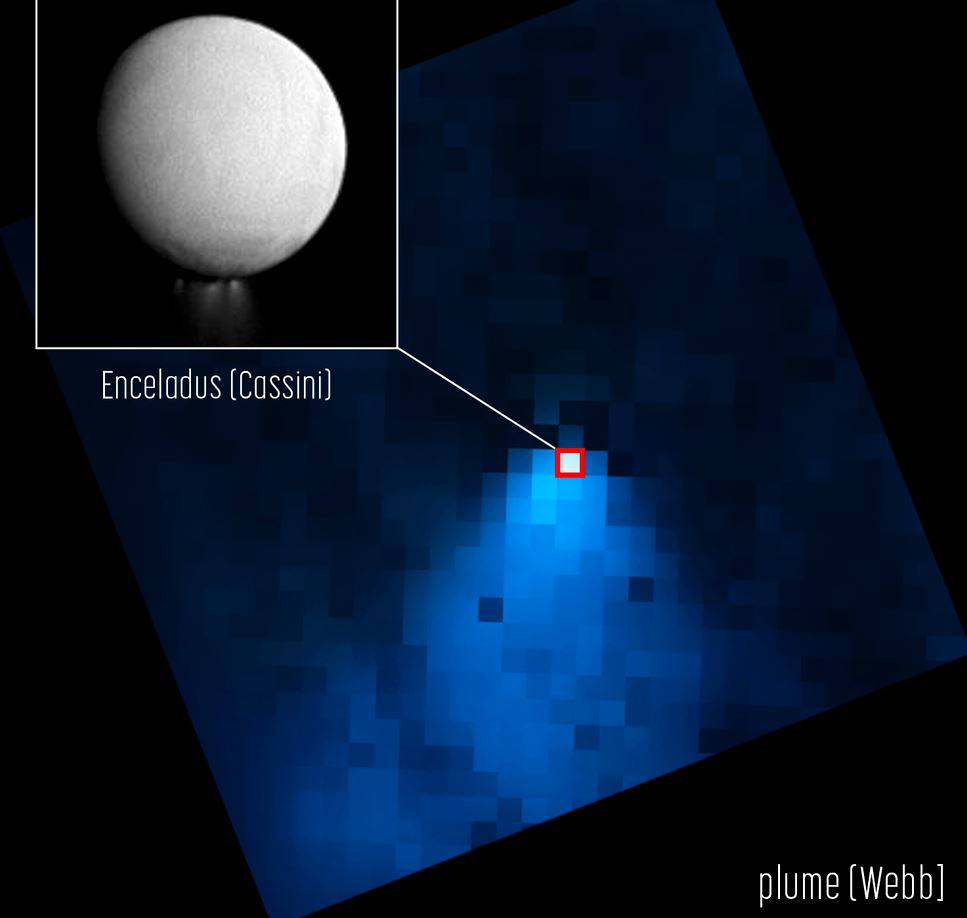Thanks to its infrared instruments, the James Webb telescope was able to observe an ejection of water vapor nearly 10,000 kilometers long! Important measurements, more than 5 years after the end of the Cassini mission, which will improve the work of scientists who study the cycles of this moon full of surprises.
Because the next mission in the area will rather study its neighbor, Titan.
It grows !
The images of the delicate jets of water vapor at the South Pole of Enceladus had marked the beautiful days of the missionCassini. A phenomenon amply studied since, which highlights in particular the presence of oceans under the thick layer of ice of this small moon of Saturn, a real frozen billiard ball 500 km in diameter. But the Cassini mission has been over since 2017, so telescopes around the world periodically rotate their sensors in the suburbs of Saturn, in an attempt to detect new geysers there… With these measurements from the James Webb telescope, scientific teams have been spoiled ! The traces of the salt water jet extend over 9,600 km in length, and an initial study of the results shows that during the shot, the equivalent of around 300 liters of water escaped from Enceladus. every second (which seems little, but still enormous compared to the old measurements).
A large cloud that also powers Saturn’s rings
” When I looked at the data, at first I thought it was not correct “Explains Geronimo Villanueva, from the Goddard Space Center (NASA). ” It was so special to detect a cloud of water vapor more than 20 times the size of this moon! This cloud extends very far from the ejection region of the geyser, at the South Pole “. And indeed, this geyser ended up forming like a torus of water around Saturn, because of the orbit of Enceladus, which turns every 33 hours around the beauty with the rings. What, precisely, to feed them? Yes, in part. Enceladus is at Saturn’s “E” ring, and about 30% of the ejected water remains in this region, while the rest slowly escapes to deposit throughout the local system.
Other comments required.
The James Webb Telescope and its sensors in the infrared frequency bands are particularly suited to this type of measurement, and these observations of Enceladus were part of a sequence of “capacity tests” that once again showed its remarkable performance. . From now on, he will observe Enceladus at regular intervals, between different campaigns. Due to a lack of appropriate budgets, there is currently no mission to this moon in particular: Dragonfly (NASA) will be centered on Titan and its hydrocarbon-laden atmosphere. But there are plans to send a small collector to fly straight through the jets at the South Pole and then return with its precious samples. However, it will be necessary to remain very patient before such a project can see the light of day.
Source : Nasa

3